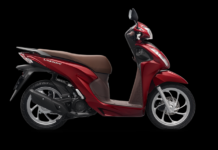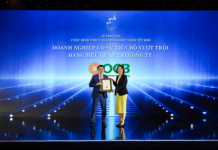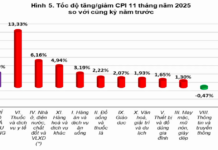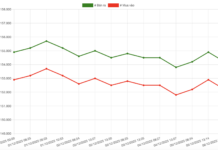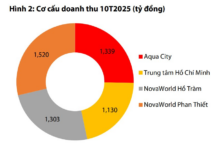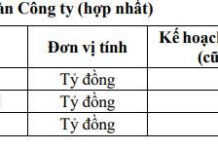
China deploys 280,000 robots in its factories annually, half the world’s total.
Domestic robot manufacturers in China are spearheading a low-cost automation drive, enabling local factories to produce more goods at lower prices, allowing the country to gain export market share, even for labor-intensive products.
President Xi Jinping’s “Made in China 2025” plan and other government initiatives have boosted the development of domestic robot makers, while injecting investment and credit into manufacturing.
According to the International Federation of Robotics, Chinese factories are installing around 280,000 industrial robots each year, half the global total, pushing the country’s robot density per worker past Germany and nearing the leader, South Korea.
Data from the Chinese research group, MIR Databank, shows that about half of these robots are produced by domestic corporations such as Chengdu CRP Robot Technology, which has won over local customers by undercutting global rivals on price.
“Not everyone needs super-advanced robots. In many cases, our functionality and stability will suffice,” said CRP’s director, Li Liangjun. His welding robots are sold at about 60% of the price of those from Japanese competitors like Yaskawa and Fanuc, as well as ABB and Kuka.
Economists believe that robust automation may explain why China is defying the typical development trajectory of losing low-end manufacturing as wages rise.
Trade data compiled by Harvard University’s Growth Lab shows that from 2019 to 2023, China increased its global export share across a range of labor-intensive industries.
The country’s global export share for small manufacturing items, such as brooms, mops, and pens, rose by 9 percentage points to 52.3% over the four-year period. Furniture exports increased by about 1.5 percentage points of market share, while China’s global share of toy exports rose from 54.3% to 56.9%.
This occurred even as government statistics from China and India showed that, on average, a factory worker in Dongguan earned about 5,200 yuan ($729) per month, while an Indian worker could earn 17,100 rupees ($194).
“This is quite surprising,” said Leah Fahy, a China economist at Capital Economics. “Historically, as countries develop, labor costs rise, and they gradually give up producing these goods.”
This trend is evident at a factory in Sichuan, a southwestern province, where welding robots from Chengdu CRP are assembling steel pieces into frames for three-wheeled electric vehicles.
“With each robot, our labor costs are halved, and efficiency increases,” said Song Ling, deputy director of Shuangsheng New Energy Vehicle, the small company that owns the factory. “There’s no choice but to automate.”
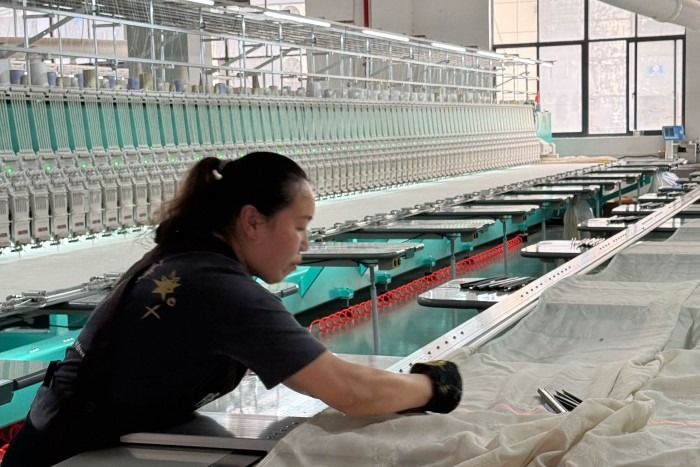
Over the past three years, Shuangsheng has automated about half of its production line, opting to purchase dozens of domestic manufacturing machines after testing them against some Japanese-made machines. The factory now ships growing volumes of 6,000-yuan cargo tricycles and tuk-tuks to Southeast Asia, as well as Africa and the United States.
Li, the director of CRP, said local factories are buying his cheaper Chinese robots to produce a range of inexpensive goods, including tricycles, furniture, exercise equipment, and bicycles.
“Previously, China relied on its vast population of 1.3 billion and abundant cheap labor to achieve its status as a manufacturing powerhouse,” Li added. “Now, China is maintaining its labor advantage with robot labor instead of human labor.”
At Shuangsheng, dozens of CRP robots have begun replacing welders, who could command monthly salaries of up to 15,000 yuan. The government hopes that many manual laborers can upgrade their skills to join the expanding “blue-collar” workforce.
However, overall employment in labor-intensive industries is declining. According to Chinese government data, from 2011 to 2023, employment at large companies in 12 labor-intensive industries fell by about 26.5%.
Jiang Xiangqian, vice president of robot manufacturer Topstar, said that eventually, robots would replace all factory workers. “We won’t need a single person in the entire production chain,” he stated.
In the southern textile hub of Keqiao, Jay Ye, the owner of Shaoxing Longkai Textile, has purchased several large-scale printing and embroidery machines to replace workers and boost productivity.
Ye said that the domestically produced machines have doubled the factory’s output while increasing profit margins. “In India, they still embroider by hand,” Ye said. “We are using machinery.”
The Future of Industrial Zones: THACO’s $340 Million Venture into AI, Robotics, and Green Tech
The project is a visionary undertaking, embodying the next-generation industrial park model. With a focus on sustainable development, automation, and smart technology, the project integrates digital innovation and artificial intelligence to create a modern, efficient, and environmentally conscious ecosystem.
“Vietnam’s Prime Minister Meets with Top Chinese Corporations, Discussing Investment and Partnership Opportunities”
On August 31, Vietnamese Prime Minister Pham Minh Chinh attended the 2025 Shanghai Cooperation Organization (SCO) Summit in China and met with leaders of several leading Chinese corporations.

